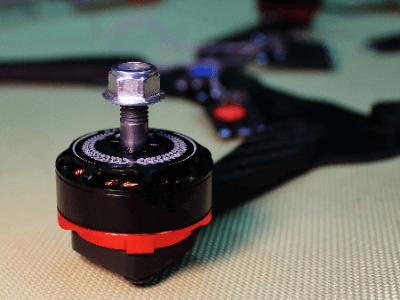What Ia a Micro Motor?

A micro motor is a very small electric motor, typically with an output of 3 watts or less. These motors can be as small as a millimeter in size, making them ideal for integration into constrained spaces and microscopic systems.
Micro motors are crucial in the design of miniature devices and modules, particularly in industries requiring advanced technology like medical precision equipment and various automotive components.
Advancements in microelectromechanical systems (MEMS) and nanotechnology are leading to smaller, more powerful micro motors, enhancing their capabilities as microscopic power sources for complex tasks.
Uses of Micro Motors
Micro motors have a broad range of applications, including:
1. Medical Equipment
Used in devices like endoscopes, surgical robots, and dental handpieces, micro motors enable precise movements. Dental handpiece motors, for example, can operate at speeds ranging from 100 to 40,000 rpm.
2. Electronic Devices
These motors are integral to smartphones (as vibration motors), fitness bands, and smartwatches, providing functionalities like notifications and vibration alerts. Most micro motors in these applications are DC motors for battery compatibility.
3. Automobiles
Micro motors automate the retraction and deployment of external mirrors in vehicles, aiding in reducing vehicle width and preventing mirror damage during parking. They are also used for adjusting the position and angle of automobile seats.
Principle of Micro Motors
Micro motors operate similarly to typical DC motors. They consist of a coil (winding of conductive wire) that forms a magnetic field when an electric current passes through it. This interaction generates the Lorentz force, causing the coil to rotate. The current direction, magnetic field direction, and generated force direction are orthogonal, allowing precise control of rotation and force in micro motors.
They have two primary components: the rotor (with the current-carrying coil) and the stator (providing a fixed magnetic field). The interaction between the rotor’s coils and the stator’s magnetic field produces rotary motion.
Types of Micro Motors
Micro motors come in various types, including brushless and permanent magnet DC motors:
1. Brushless Motor</h4
Brushless motors are DC motors without electrical brushes, known for efficiency and reliability. They typically have three or more coils, and rotation is controlled by sequentially supplying current to these coils.
Characterized by compact size, high efficiency, long lifespan, and low maintenance, brushless motors come in two types: inner rotor and outer rotor. The inner rotor type offers better controllability, while the outer rotor type provides stable rotation.
2. Permanent Magnet DC Motor
This motor type features an internal permanent magnet and uses brushes for rotation, with the brushes supplying current to the coils. Known for simplicity, cost-effectiveness, and ease of control, these motors are sometimes replaced by brushless motors due to the wear and maintenance of brushes.
Permanent magnet DC motors are further classified into surface magnet and embedded magnet types. The surface magnet type attaches magnets to the rotor’s outer circumference, whereas the embedded magnet type embeds magnets inside the rotor.